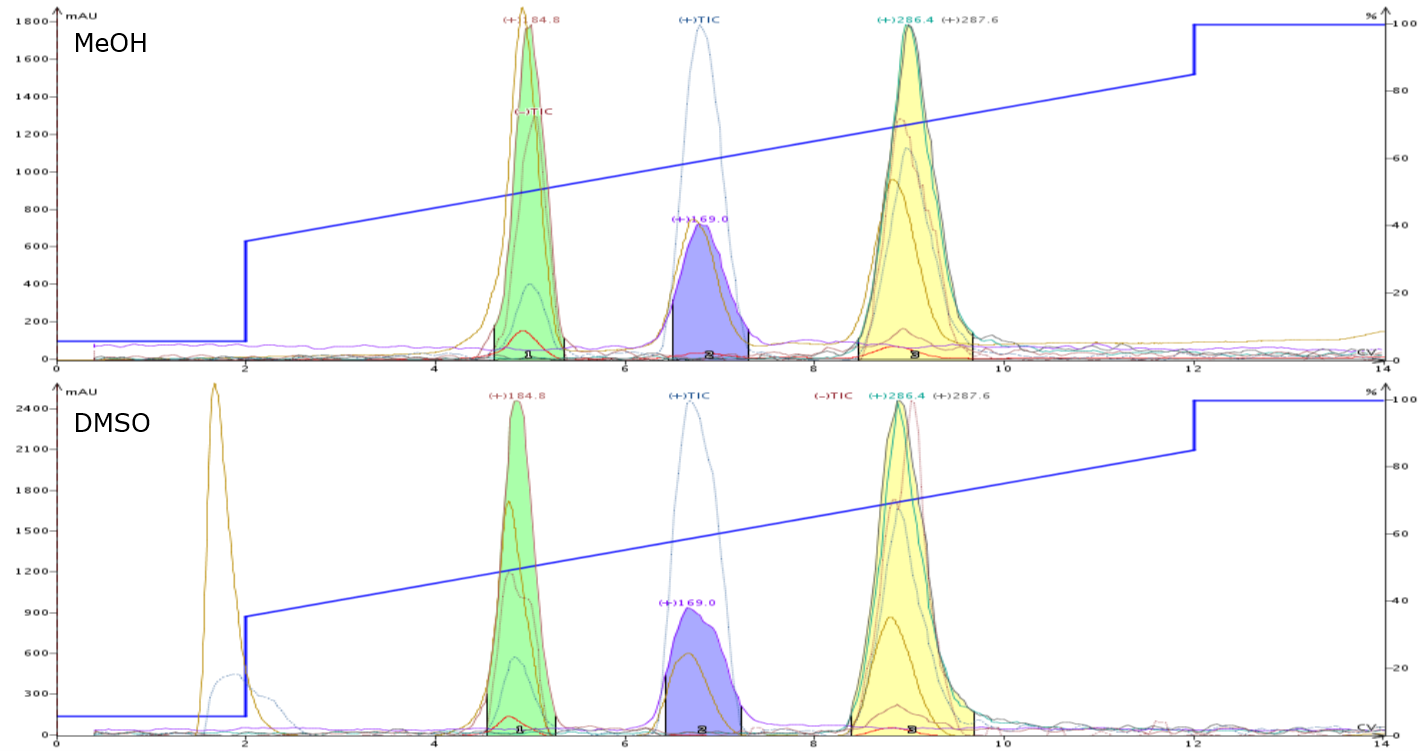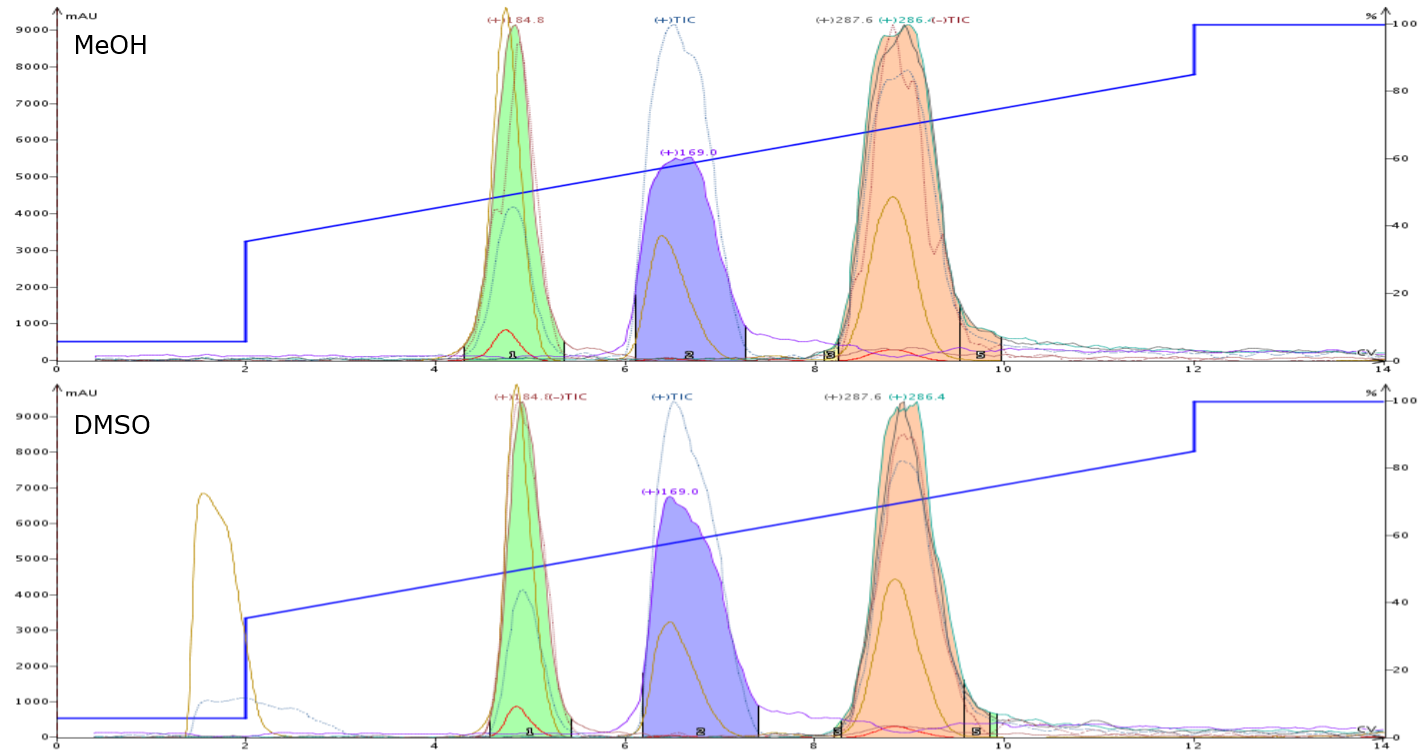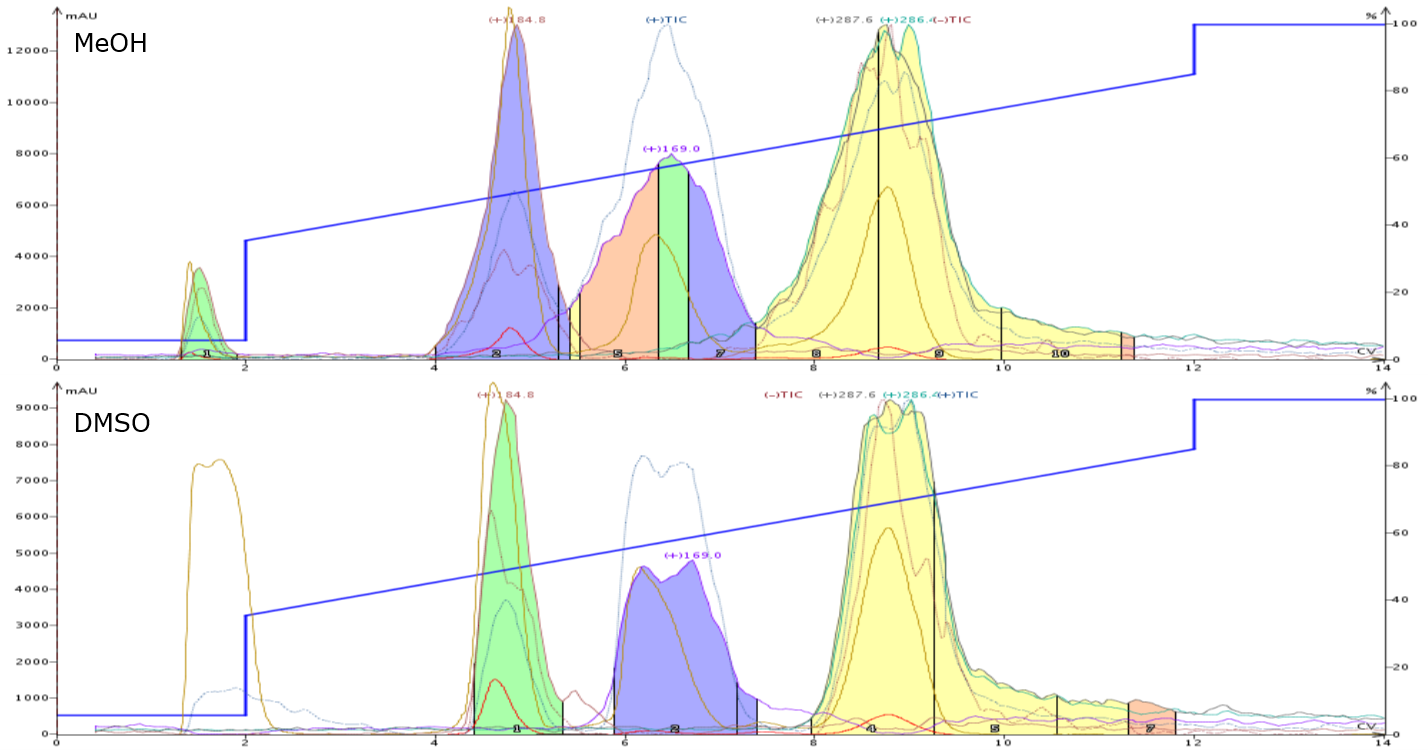With all forms of chromatography there are limitations relating to sample load – both mass and volume. These are independent variables which, for the best results, should be investigated separately. In this post, I will address the impact of increasing solvent volume on flash chromatographic separations.
One related and critical variable in determining maximum loading volume is the choice of the dissolution solvent (sample solvent). If the solvent strength is too high, it will result in broadening peaks and, eventually, product loss as some sample will elute at 1 CV with the sample solvent.
As mentioned in previous posts, when possible, maximize the sample’s concentration in the dissolution solvent to maximize separation performance.
To help illustrate the roles of dissolution solvent and injection volume I will show data from the purification of a reaction mixture dissolved in two different solvents, methanol (MeOH) and dimethylsulfoxide (DMSO).
The reaction of hippuric acid (~0.5 g) and α-methylbenzyl amine (~0.4 g) in ethyl acetate (EtOAc) at 200 °C for 10 minutes was preformed twice using a Biotage® Initiator+ microwave synthesizer. Post synthesis, I transferred each reaction into its own tared 20 mL scintillation vial and evaporated the EtOAc using a Biotage® V-10 Touch.
Reaction 1 yielded 932.5 mg while reaction 2 generated a total mass of 942.5 mg. Reaction 1 was dissolved in MeOH to a volume of 5 mL while reaction 2 was dissolved in the same total volume of DMSO. These solvents were selected because they provided complete reaction mixture solubility.
I used a 12-gram Biotage® Sfär C18 column on a Biotage® Isolera Dalton 2000 for this study. The 12-gram C18 column has a column volume (CV) of 17 mL. Injection volumes need to be thought of in terms of % of a CV and should be kept as small as possible. I chose the Dalton 2000 system because of its ability to determine if any reaction mix components elute with the dissolution solvent, a clear sign of volume overload.
The first test used a small, 0.1 mL load (~18.75 mg) which is equal to 0.6% of the column's volume. With this small volume both samples provided identical chromatography, Figure 1.

Figure 1. Chromatographic comparison of reaction mixture purification dissolution solvents with a 0.1 mL load (0.6% CV). Top - MeOH dissolved reaction mixture. Bottom - DMSO dissolved reaction mixture.
Test two increased the injection volume to 0.5 mL (~93.75 mg), equal to 2.9% of the column’s volume. Here we can see the methanol sample’s peaks begin to broaden but still provide an excellent separation, Figure 2.

Figure 2. Comparison of reaction mixture purifications with a 0.5 mL load (2.9%). Top - MeOH solvated reaction mixture. Bottom - DMSO solvated reaction mix.
In the last test, the injection volume was doubled to 1 mL (~187.5 mg). At this volume, 5.9% of the column’s volume, the methanol sample shows major resolution loss due to wider peaks with product eluting at the solvent front. The DMSO sample, however, still generated an excellent separation with no product eluting with the DMSO peak and room to increase load further, Figure 3.

Figure 3. Chromatography comparison with 1 mL load volume (5.9% of CV). Top - MeOH solvated reaction mix where sample breakthrough is visible along with broadened peaks and resolution loss. Bottom - DMSO solvated reaction mix shows no breakthrough and full resolution.
As you can see, the choice of sample solvent has a major impact on purification quality. While methanol is fairly polar (log P -0.77), it is the strong solvent in the gradient which limits its load volume range. DMSO, on the other hand, is very polar (log P -2.03) and a really great solvent, DMF is also an excellent dissolution solvent choice. DMSO's broad solvation properties and very high polarity make it my reversed-phase dissolution solvent of choice when I want to maximize load and purification throughput.
If you use methanol, or even acetonitrile, as your sample solvent, keep the volume to less than 3% of the column's volume. If you dissolve your sample in DMSO, you can reasonably expect to at least double the injection volume and therefore the mass load while maintaining the separation.
For more information on reversed-phase loading capacity determination, click the button below:

